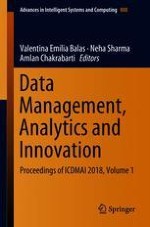The book presents the latest, high-quality, technical contributions and research findings in the areas of data management and smart computing, big data management, artificial intelligence and data analytics, along with advances in network technologies. It discusses state-of-the-art topics as well as the challenges and solutions for future development. It includes original and previously unpublished international research work highlighting research domains from different perspectives. This book is mainly intended for researchers and practitioners in academia and industry.
